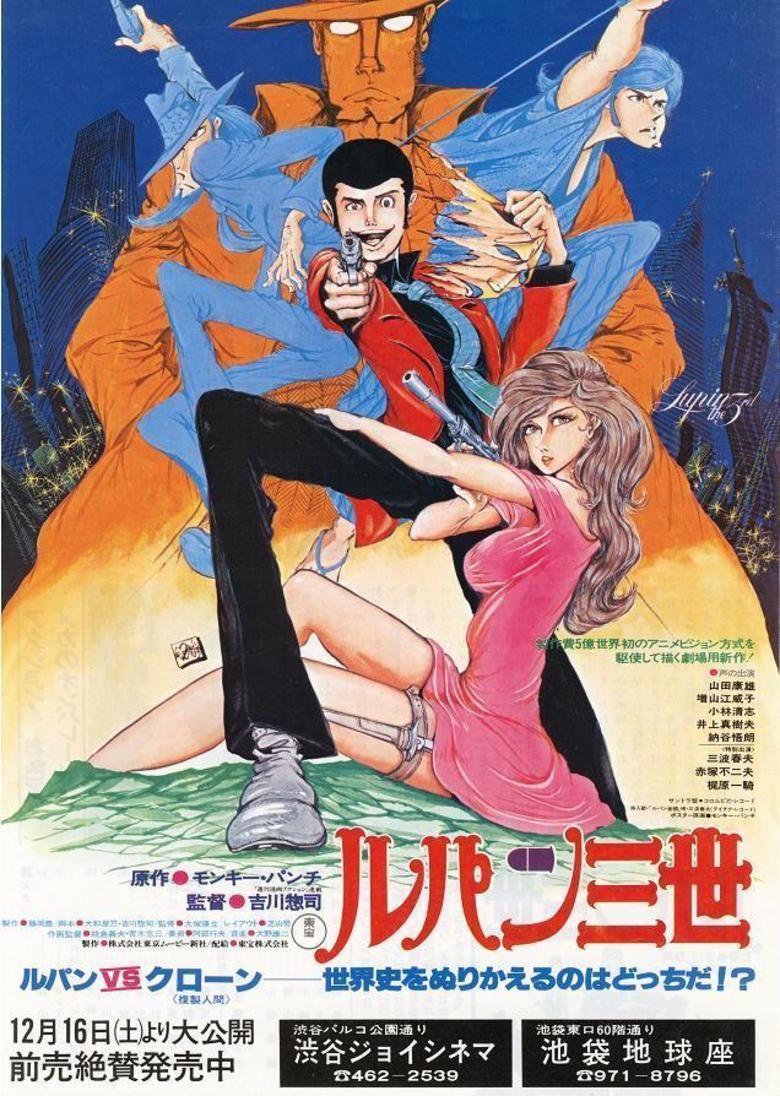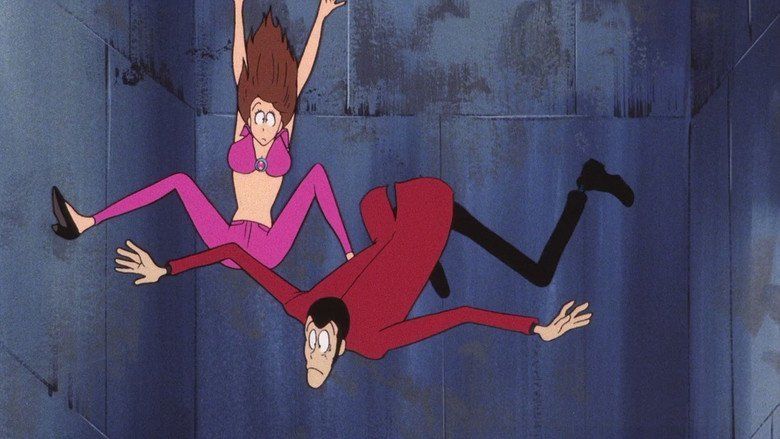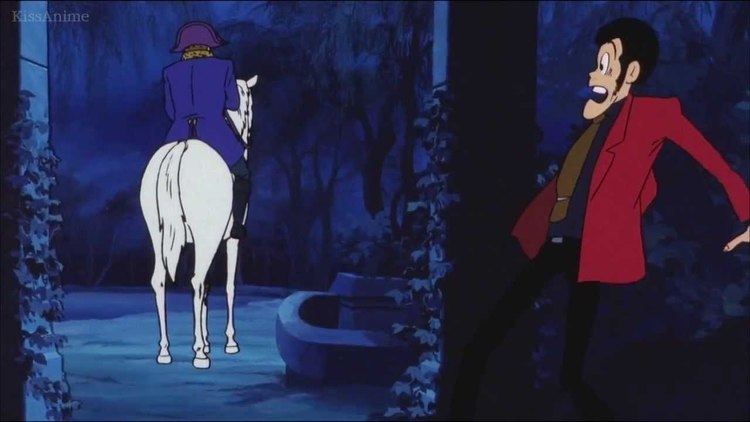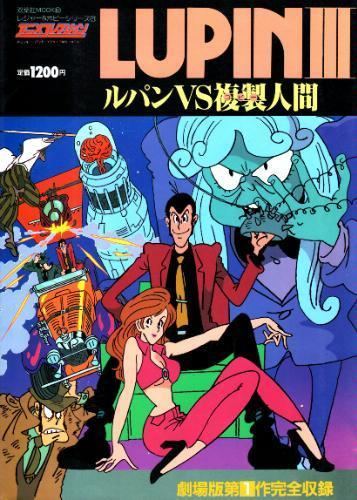The Mystery of Mamo
7.6 /10 1 Votes
82% Rotten Tomatoes Genre Animation, Action, Adventure Adapted from Lupin III Country Japan | 6.9/10 IMDb Director Soji Yoshikawa Duration | |||||||||||||||||||||||||||||||||
 | ||||||||||||||||||||||||||||||||||
Release date December 16, 1978 (1978-12-16) Writer Monkey Punch (comic), Atsushi Yamatoya, Soji Yoshikawa, Ardwight Chamberlain (dialogue), George Roubicek (dialogue: Manga English dub), Grant Moran (dialogue) Cast (Arsene Lupin III), (Daisuke Jigen), (Fujiko Mine), (Goemon Ishikawa), Gor? Naya (Inspector Koichi Zenigata), (Arsene Lupin III (voice: English version))Characters Arsene Lupin III (Yasuo Yamada), Fujiko mine (Eiko Masuyama), Daisuke Jigen (Kiyoshi Kobayashi), Koichi Zenigata (Goro Naya), Goemon Ishikawa XIII (Makio Inoue) Similar movies Raiders of the Lost Ark , The Mummy , Self/less , Exodus: Gods and Kings , The Age of Adaline , X-Men: Apocalypse | ||||||||||||||||||||||||||||||||||
Home media review lupin the 3rd the mystery of mamo
The Mystery of Mamo, also known as The Secret of Mamo, is a 1978 Japanese animated science fiction adventure comedy film; it is the first animated film of the Lupin III franchise created by manga author Monkey Punch. The film was originally released Japan as Lupin III (ルパン三世, Rupan Sansei) but was later retitled to Lupin III: Lupin vs. the Clone (ルパン三世 ルパンVS
Contents
- Home media review lupin the 3rd the mystery of mamo
- 1978 the mystery of mamo yearoflupin
- Plot
- Production
- Release
- English releases
- Full cast
- Reception
- References

Since its original Japanese release, the film has been licensed to several companies for release in North America and Europe, with four different English dubs of the film being produced in that time. In 2013, North American distributor Discotek Media released the film on a DVD containing all four English dubs, as well as extensive liner notes and essays about the film and its production.

Financially successful upon release, The Mystery of Mamo has continued to polarize critics and fans of the Lupin franchise, especially in English-speaking markets. Praise for the film tends to be aimed at its originality and faithfulness to the manga, and criticism usually focuses on the writing and execution of the third act. The English dubs, though varying widely in terms of their production quality, interpretation of the dialogue and voice acting, have frequently been singled out for praise.

1978 the mystery of mamo yearoflupin
Plot

Inspector Zenigata travels to Castle Dracula to confirm the execution of his longtime nemesis Arsène Lupin III; the body he finds is a decoy that is being used by another Lupin to flee from the castle. Zenigata travels to Egypt, believing that Lupin will raid the Giza Necropolis based on prior thefts of immortality-granting objects. His prediction proves accurate, but Lupin and his colleagues Daisuke Jigen and Goemon Ishikawa XIII flee with the Philosopher's Stone. The Stone was requested by Lupin's would-be lover, Fujiko Mine, who, having agreed to obtain the Stone for a mysterious client, steals it from Lupin in Paris. The benefactor reveals his name to her as Mamo, but they discover that the Stone is a fake made by Lupin.

In response, Lupin's gang is attacked by Mamo's forces before finding their hideout destroyed by his henchman, Flinch. Jigen and Goemon blame the hideout's destruction on Fujiko, before quarrelling between themselves; Lupin calms the others by promising to abandon his desires for Fujiko. With nowhere else to go, they travel toward the ocean before finding a house with food and water. A wounded Fujiko comes for Lupin, forcing him to go against his promise and causing Jigen and Goemon to abandon them. Fujiko drugs Lupin before Flinch arrives to take them to Mamo. Jigen later returns to find the plane leaving, but retrieves a clue to its destination. He and Goemon are later interrogated about Mamo by American agents, but are released when they are unable to answer their questions. During the inquiry, they decipher Fujiko’s clue, leading them to the Caribbean.

On a Caribbean island, Mamo, a mysterious billionaire officially known as Howard Lockewood, tells Lupin that he manipulated him into stealing the Stone as a test, as he is considering granting him and Fujiko immortality in admiration of their skills. Lupin, however, is more interested in the Stone, and searches Mamo's island for it. After retrieving the Stone, he and Fujiko are chased by Mamo's henchmen until they stumble across Mamo's lair. Mamo deems Lupin unworthy of eternal life and attempts to visualize his perverted nature to Fujiko, but she refuses to abandon him. The USAF attacks the base, having tracked Jigen and Goemon to the island. Jigen rescues Lupin and Fujiko and seemingly kills Mamo in a shootout, while Goemon duels with Flinch. The altercation damages Goemon's sword, the Zantetsuken, causing him to leave for training purposes.

Lupin, Fujiko and Jigen travel to Colombia, where Lupin theorizes that Mamo may have gained eternal life by continuously cloning himself. They are thrust into a vision by Mamo, who reveals that his cloning technique has kept him alive for ten thousand years, and that he is responsible for virtually every major event in human history. Mamo also explains that he cloned Lupin. He then appears in person to reclaim Fujiko, and a distraught Lupin challenges him to perform a miracle. Mamo responds by setting off an earthquake through the destruction of a nuclear power station.
Inside a temple, Mamo explains to Fujiko that his cloning technique has never been perfected, and that he has degenerated from his original form as a result. He decides that he and Fujiko must repopulate the Earth, and convinces her to push a button to launch nuclear missiles to achieve this end. Lupin arrives, and reveals that he rigged the missiles to explode before they could launch. Frustrated, Mamo takes Fujiko with him to a launching pad and fends Lupin off with lasers. Lupin uses the tip of Goemon's sword (given to him by Jigen earlier) to deflect the lasers, incinerating Mamo.
A rocketship emerges, containing a giant brain that reveals itself to be the original Mamo. Lupin realizes that Mamo had controlled his clones resembling his body just as the rocket launches into space. Lupin and Fujiko escape the rocket's trajectory, but not before Lupin plants an explosive on it. The glass shatters, and Mamo's brain drifts toward the sun. Lupin finds Fujiko in the rubble, where he is captured by Zenigata. Fujiko offers to help Lupin, but the Americans launch a missile attack on Mamo's base. Fujiko is rescued by Jigen, while Lupin and Zenigata, handcuffed together, escape on foot.
Production
The Mystery of Mamo was produced while the second Lupin III television series was being broadcast, and was created with the intention of making a film that was aesthetically and thematically faithful to Monkey Punch's original manga, as censorship standards of the time prevented such content being reproduced for TV animation. Due to an increased popularity of the first series, staff who had worked on that series were assembled to make the film. Yasuo Otsuka, who was animation director and character designer on that series, supervised the film's production. Sōji Yoshikawa, who storyboarded the first and last episodes of the first series, acted as director and co-writer of the screenplay. Atsushi Yamatoya, a writer and director of pink films who had written two episodes of the first series (and later the third animated Lupin film, Legend of the Gold of Babylon), also contributed to the script. Yuzo Aoki, a key animator for episodes 11 and 23 of the first series, was responsible for the angular, Monkey Punch-esque character designs seen in the film (he would later become noted for such work on Lupin III Part III and Legend of the Gold of Babylon). Tsutomu Shibayama, who was the character designer for the 1969 Pilot Film that had preceded the original series, was responsible for the layout. A relative newcomer in the film's production team was composer Yuji Ohno, who had provided the score for the second series. The main cast of the second series also resprised their roles for the film.
Mamo was Tokyo Movie Shinsha's first full-length feature production. The movie was given a budget of 500 million yen, comparable to major live action films at the time and unheard of for an animated production. Production lasted for 15 months and involved 1,315 members of staff. The storyboard was 575 pages. 62,000 cel sheets were used in the animation, compared to 5,000 cels used in an average half-hour TV animation. Oversized cels were used and filmed in a modified VistaVision process known as "Anime Vision", which allowed for a brighter and sharper picture for projection in theaters compared to a TV production. 18,000 reference images were used for background and mechanical research, and 196 individual character drawings were created.
Mamo's name is taken from the villain Kyousuke Mamoh who had appeared in the manga and first TV series. His physical design was inspired by Swan, Paul Williams' character in the 1974 musical horror film Phantom of the Paradise, and represents a monster who is both a boy and an old man at the same time. Similarly, the characters of Special Presidential Assistant Heinrich Gissinger and Special Agent Gordon are parodies of Dr. Henry Kissinger and G. Gordon Liddy respectively.
Release
The Mystery of Mamo was originally released in Japan on December 16, 1978 as Lupin III. The film was a financial success, earning 950 million yen and making it the ninth-highest grossing Japanese film of the 1979 film season. Footage from the film, along with scenes from The Castle of Cagliostro, was used Stern Electronics (under license from TMS) to make the Dragon's Lair-style laserdisc video game Cliff Hanger. By the mid-1980s, TMS re-titled the film in Japan as Lupin III: Lupin vs. the Clone, while English-speaking fans had began referring to the film as The Mystery of Mamo, to distinguish it from the two TV series and The Castle of Cagliostro.
A TV broadcast of the film on March 28, 2014 on NTV attained an audience share of 11.2% in the Kantō region of Japan. It was the second highest share for a movie broadcast during that week.
To commemorate the 50th anniversary of the Lupin III franchise, The Mystery of Mamo will receive a limited theatrical re-release in Japan on September 1, 2017, utilizing a newly-remastered print in 4K resolution, a 5.1 surround sound mix and 4D effects.
English releases
The original English-dubbed version of the film, commissioned by Toho, was produced by Frontier Enterprises; this dub, also titled Lupin III, was made for JAL flights. It was also available from the Los Angeles branch of Toho for booking to play at local theaters - the University of California, Berkeley, was host to several showings. This version also has no credits for the voice cast itself on any known prints and as such, the full cast has yet to be verified. Goemon was voiced by William Ross (the owner of Frontier Enterprises, and the writer/director of its dubs) and Zenigata was voiced by Greg Starr (a Tokyo-based writer/editor). It was once speculated that actors from the English adaptation of Speed Racer, including Peter Fernandez, Corinne Orr, Earl Hammond and Jack Grimes, were involved in this dub, but their involvement in its production has since been deemed impossible, given the manner in which the dub was produced. Despite being largely faithful to the original Japanese script, most of the names of the main characters were changed to Western-sounding alternatives. Anime historian Carl Horn provided Yasuo Otsuka with a VHS copy of the dub in 1987 because Otsuka was previously unaware of it.
Streamline Pictures, through their distributor Orion Home Video, released the film for the first time on VHS in North America in April 1995. According to anime historian and former Streamline employee Fred Patten, Carl Macek could not release the film with the Toho dub at that time due to copyright issues with TMS, and had to redub the film. Much of the cast and crew that had worked on Streamline's dubs of The Castle of Cagliostro and Lupin III's Greatest Capers worked on the second dub of the film. Loosely based on the Toho dub and its script, this adaptation made various alterations to the film's original dialogue. Streamline's release used The Mystery of Mamo title, in spite of the character's name being meant to be spelled "Mamaux" in English. The decision to keep the "Mamo" spelling was based on fan familiarity and a desire to avoid upsetting the fans by changing it. A Region 0 DVD of the film with the Streamline dub was released by Image Entertainment on April 21, 1998.
On July 8, 1996, the film was released on VHS in Britain by Manga Video as Secret of Mamo. This release used a third dub adapted and directed by actor-director George Roubicek, with the script also being based on that of the Toho dub. In order to avoid possible legal disputes with the estate of Maurice Leblanc (the creator of the original Arsène Lupin), Lupin's name was changed to "Wolf III" for this dub. Manga later released a DVD of the film with the same title on August 4, 2008.
On July 29, 2003, Geneon (then known as Pioneer Entertainment) re-released the film on DVD in North America using an anamorphic print taken from the Japanese DVD; the print was modified to remove unlicensed usages of corporate logos, as well as a magazine image depicting Lupin with the Justice League. Another English dub was produced for this release by Phuuz Entertainment, using the cast that was dubbing the second TV series. A DVD utilizing Pioneer's dub and transfer was released by Madman Entertainment in Australia on August 16, 2006. As with their dub of the series, Pioneer's dub of the film has attracted a moderate amount of criticism - while the voice acting in the dub has been well-received, the script, which took a liberal approach with translating the Japanese dialogue, received a mixed reaction from critics and fans. In 2012, TMS Entertainment began showing this dub on the Hulu video streaming service.
Discotek Media released a new edition of The Mystery of Mamo on DVD in America on February 26, 2013. The release utilizes an uncut Japanese print, and includes all four English dubs, in addition to the original Japanese audio, as well as several essays and liner notes on the film. The Toho/Frontier dub was extensively restored and reconstructed from an edited version of the dub released on a previous Italian DVD release of the film, as well as copies of the dub provided by fans.
Full cast
Due to a lack of localisation credits on any known prints, the cast for the Toho dub remains largely unknown aside from William Ross as Goemon and Greg Starr as Zenigata.
Reception
Manga Mania reviewer Peter Lyle described the film as "a convoluted tale that plays like the adventures of James Bond, Don Juan and Charlie Chaplin all rolled into one" with "plenty of wry humour and slapstick". Lyle additionally praised the animated effects and supporting characters. In summary he felt that Mamo was "a healthy dose of fun".
In his review for Mania.com, Chris Beverdige enjoyed the movie despite having previously disliked it on a previous viewing several years before. He attributes this to being more familiar with the characters through other entries in the Lupin III franchise. However, he criticised the final third of the movie for its science fiction elements, which he felt were inferior to the action and character-driven elements of the first two thirds. This criticism was shared in another review for Mania.com by John Erini, except that he believed that the film became unwatchable due to the development of the Mamo character.
Rob Lineberger, writing for DVD Verdict, also agrees with the criticism of the final third, and despite repeated viewings, felt no closer to understanding the events. Additionally, he criticised the "lack of cohesion" and "unbroken string of jump cuts and deux ex machinas" throughout the film. Reflecting on the positives of the film, Lineberger highlights the characters of Jigen, Goemon and Fujiko as being more interesting than either Lupin or Mamo. He also credits the movie for tackling interesting concepts such as cloning, personal identity, love and honour, despite the way they are presented. In summary, he suggests that Lupin fans will find a more ambitious story in this film than the television episodes if they can accept some flaws. He recommends people who are not Lupin fans to watch The Castle of Cagliostro instead.
Darius Washington of The Fandom Post reviewed the Discotek edition of Mamo. He described the structure of the film's story as "haphazard" and "a bit hard to get into", while praising the collection of "educational" extras and different English dubs on Discotek's release. In conclusion, Washington felt that "the film itself is decent", but is more suited for learning about anime history than for entertainment value. He gave the film content a "B" rating and the extras an "A+" rating.
Lupin expert Reed Nelson, in writing a feature titled Lupin the Third: The Complete Guide to Films, TV Specials and OVAs for Anime News Network (ANN), placed Mamo in the "Maybe" category of the franchise's media that he considered was worth viewing. Praising Discotek Media's "fancy" DVD release, he described the film as "often held up as the example of how to write a Lupin story - it has unfolding drama within the core cast, a truly threatening villain, and an unusual dedication to mature storytelling. Note that its gangly character designs and false endings may be kind of a turn-off for modern audiences".
In an essay included with Discotek Media's release, ANN contributor Mike Toole highly praised The Mystery of Mamo in virtually every aspect, describing the film as "the absolute essence of Lupin III". Toole particularly lauded Sōji Yoshikawa's direction (likening the director’s affinity for bizarre images and situations to the works of Werner Herzog), as well as the film's cartoonish but detailed animation and design work, characterization and humour. He also gave praise to all four English language tracks of the film, particularly the Toho dub, and noted the film's relevance to real-world events of the time (including the Cold War, the Watergate Scandal, the publication of David Rorvik's novel In his Image: The Cloning of a Man and the birth of Louise Brown). Toole concludes his essay by stating that "[m]ore than 30 years after its debut, [The Mystery of Mamo], with its heady mix of globe-trotting action, raciness, wild comedy, and hot jazz-funk music, is the original Lupin, the real deal. Accept no substitutes - even if they're clones! As the international trailer for this anime classic proclaims: Lupin III can do anything!"
References
The Mystery of Mamo WikipediaMystery of Mamo IMDbMystery of Mamo Rotten TomatoesThe Mystery of Mamo themoviedb.org
